Step-by-step: Sang Yoon’s pig ear terrine
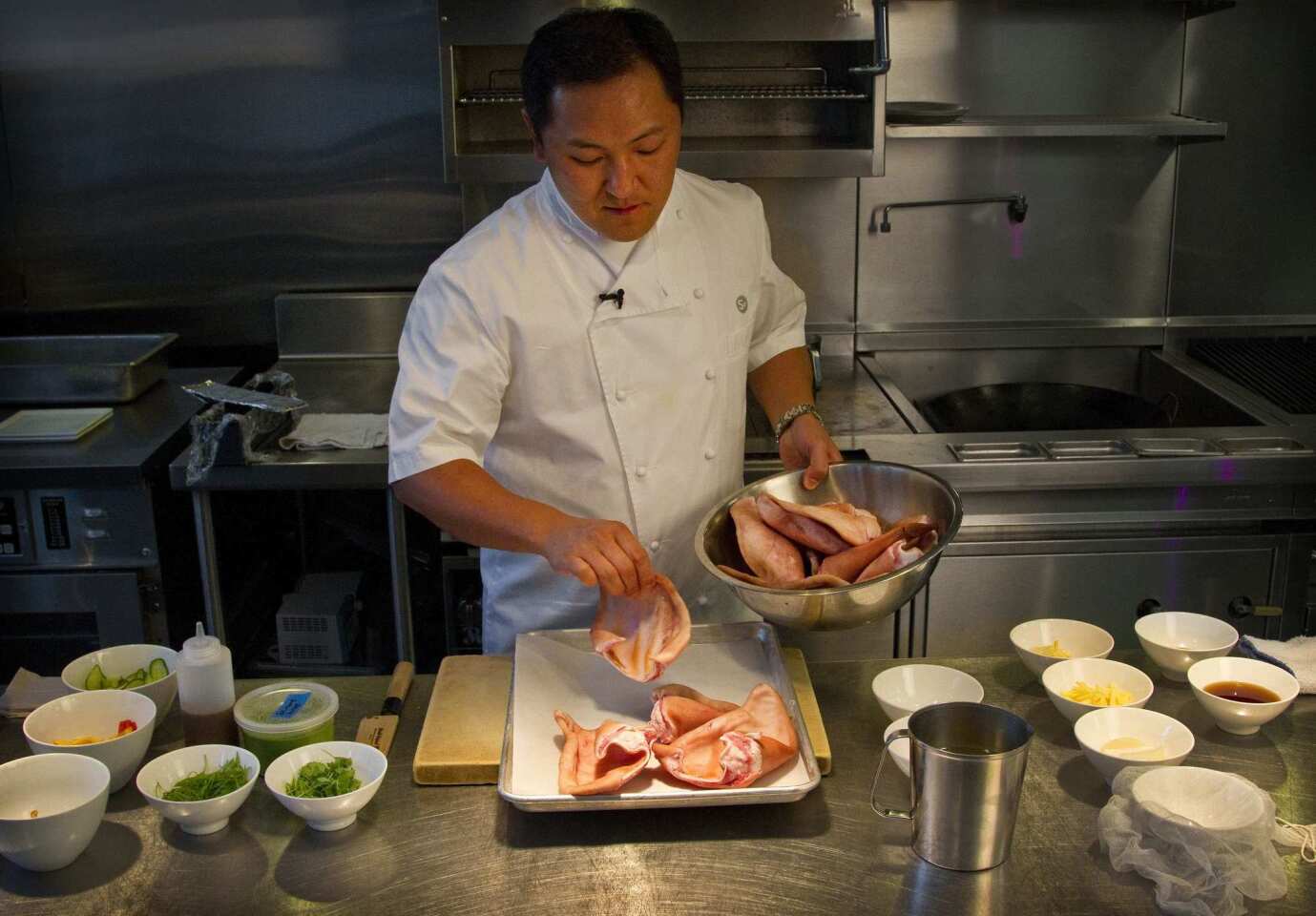
Chef Sang Yoon places pig ears on a platter surrounded by the other ingredients for the terrine. (Ricardo DeAratanha / Los Angeles Times)
A step-by-step look at how to make chef Sang Yoon’s pig ear terrine, served at his restaurant Lukshon in Culver City.
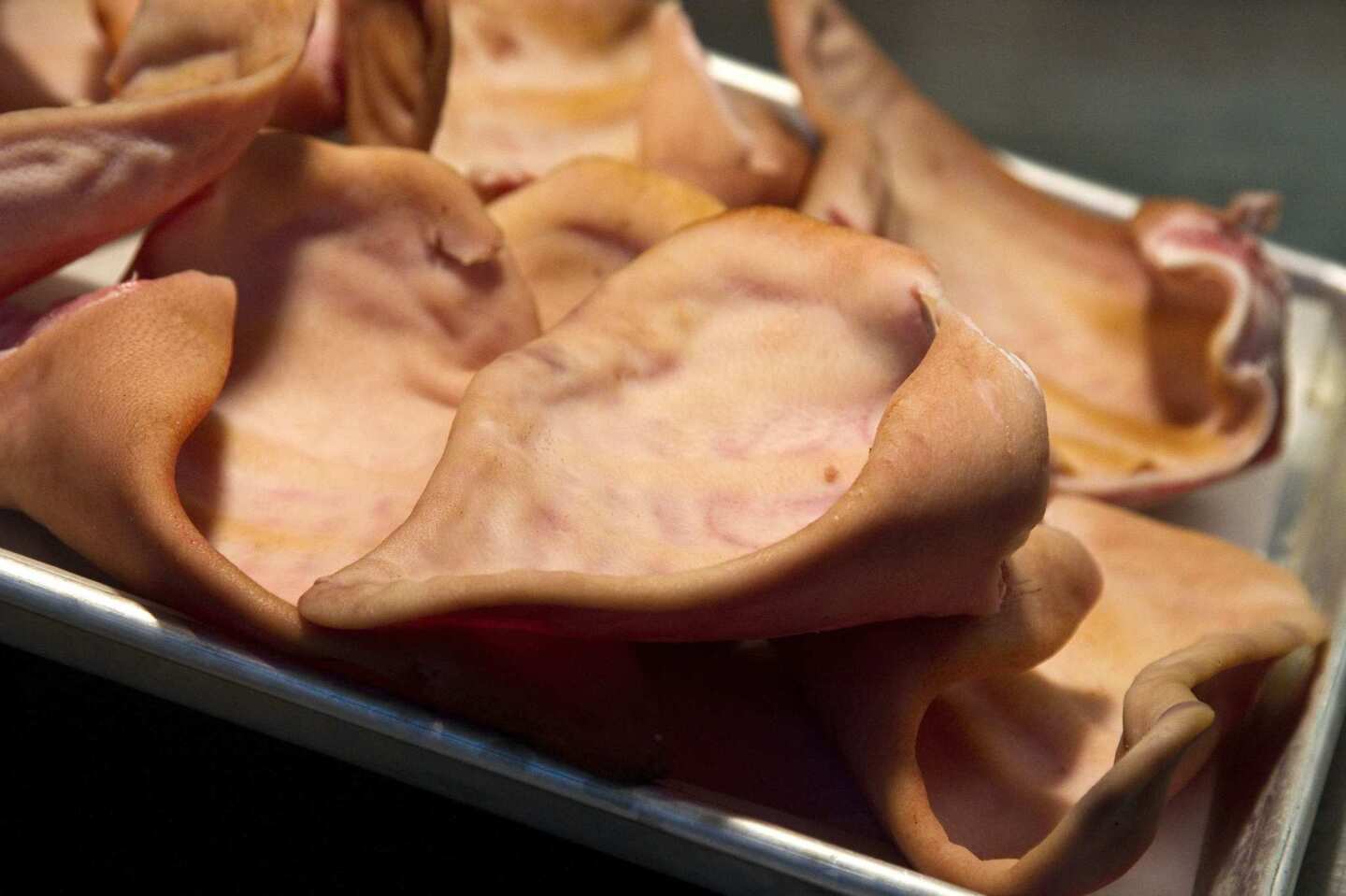
Clean the pig ears. Remove any dirt or hairs, and rinse the ears thoroughly. Set aside, then place in a pressure cooker. (Ricardo DeAratanha / Los Angeles Times)
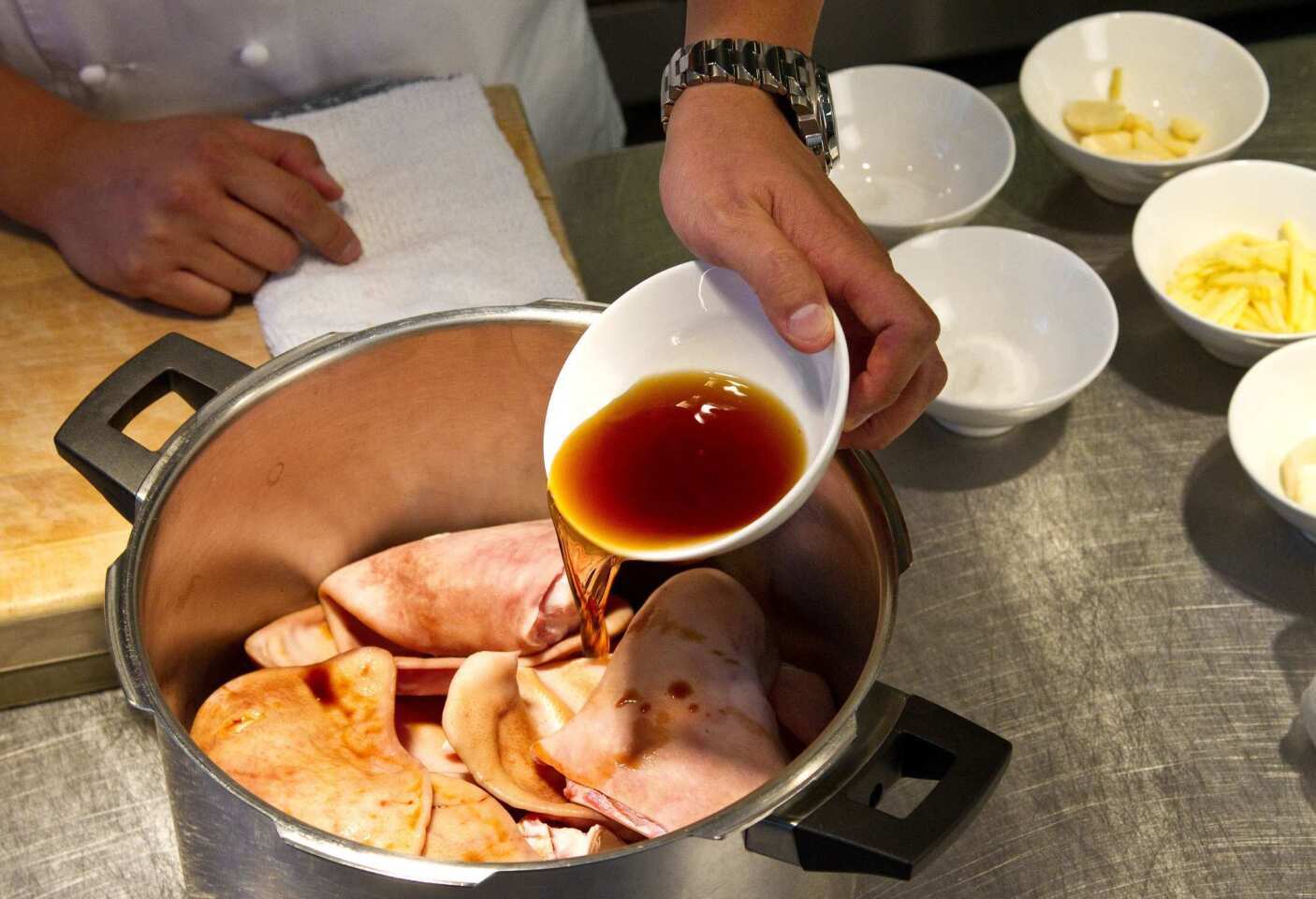
After the pig ears are put into a pressure cooker, Shao Xing rice vinegar is poured in after the light soy sauce is added. (The liquids and sachet can also be added to the pressure cooker first, with the pig ears placed on top.) (Ricardo DeAratanha / Los Angeles Times)
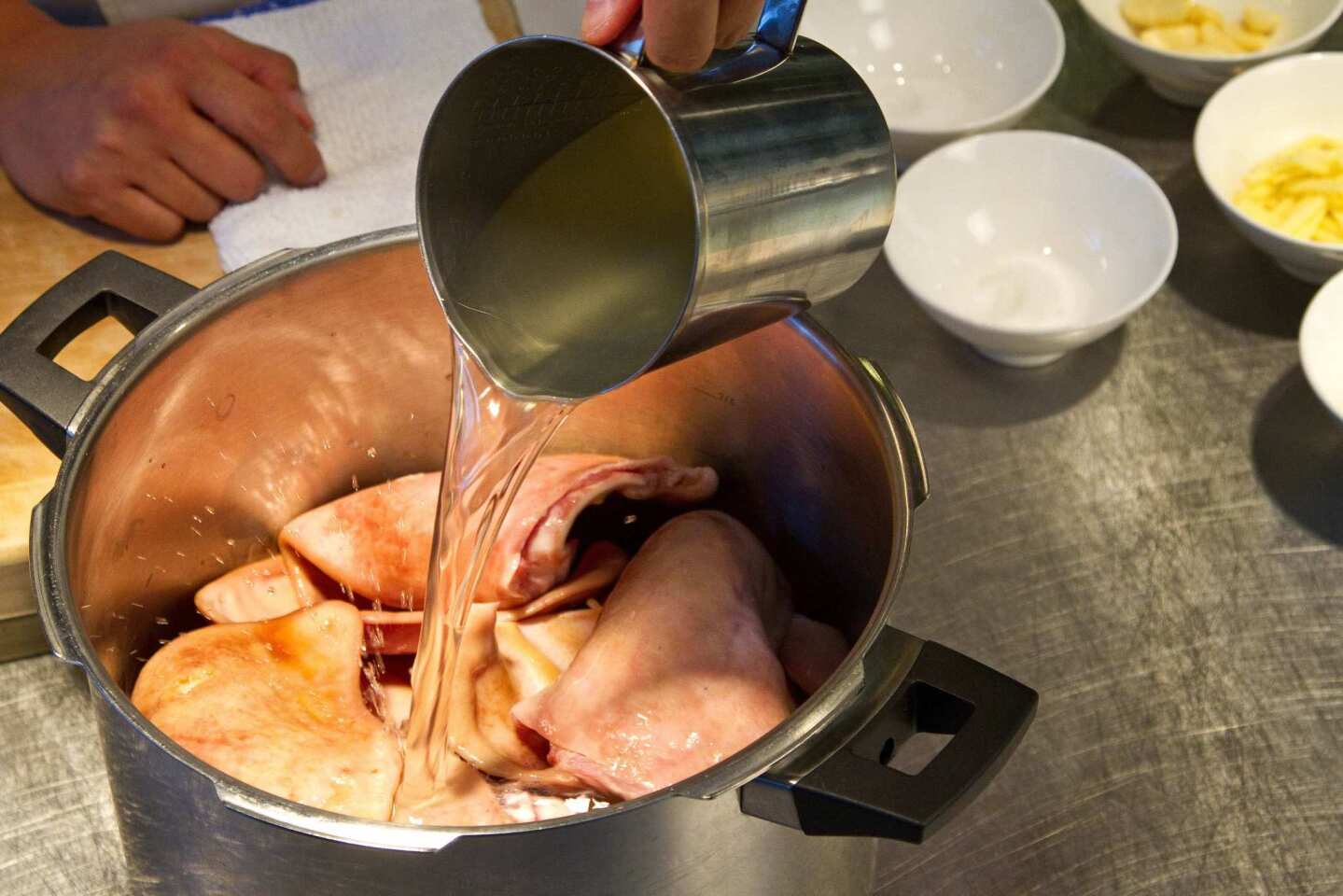
Chicken stock is poured into the mix in the pressure cooker. (Ricardo DeAratanha / Los Angeles Times)
Advertisement
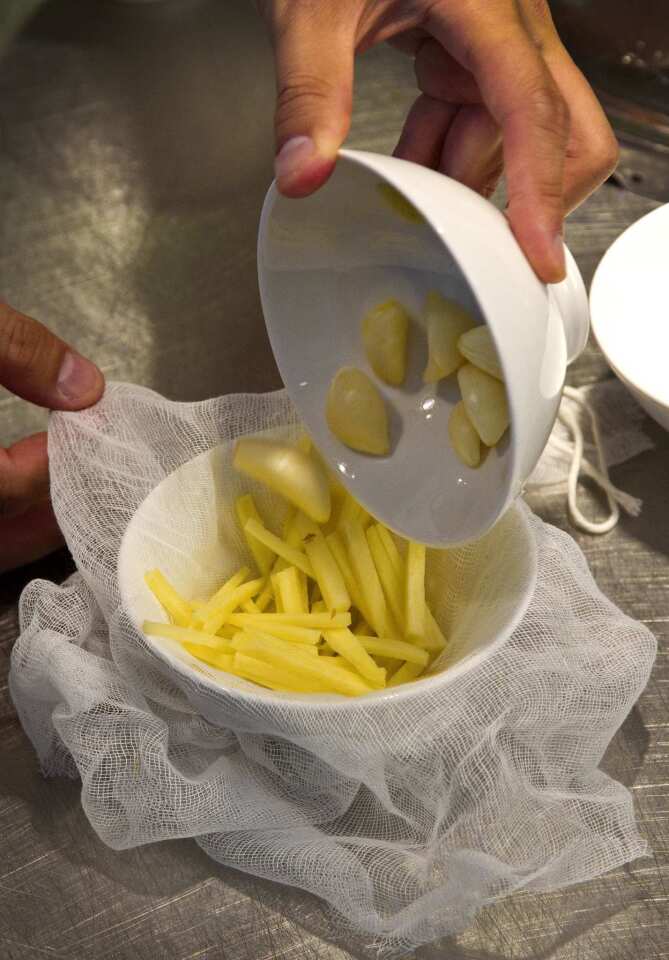
A sachet is made with star anise, ginger and garlic wrapped in a piece of cheesecloth and tied with twine. (Ricardo DeAratanha / Los Angeles Times)
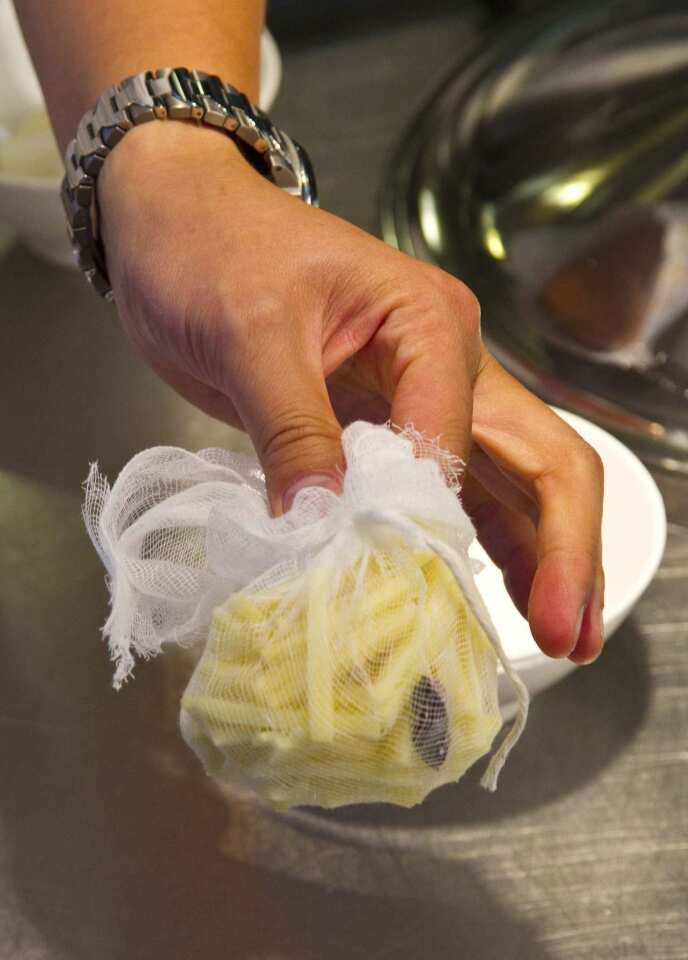
Bring the sides of the cheesecloth together to make a pouch and tie together with cotton twine. (Ricardo DeAratanha / Los Angeles Times)
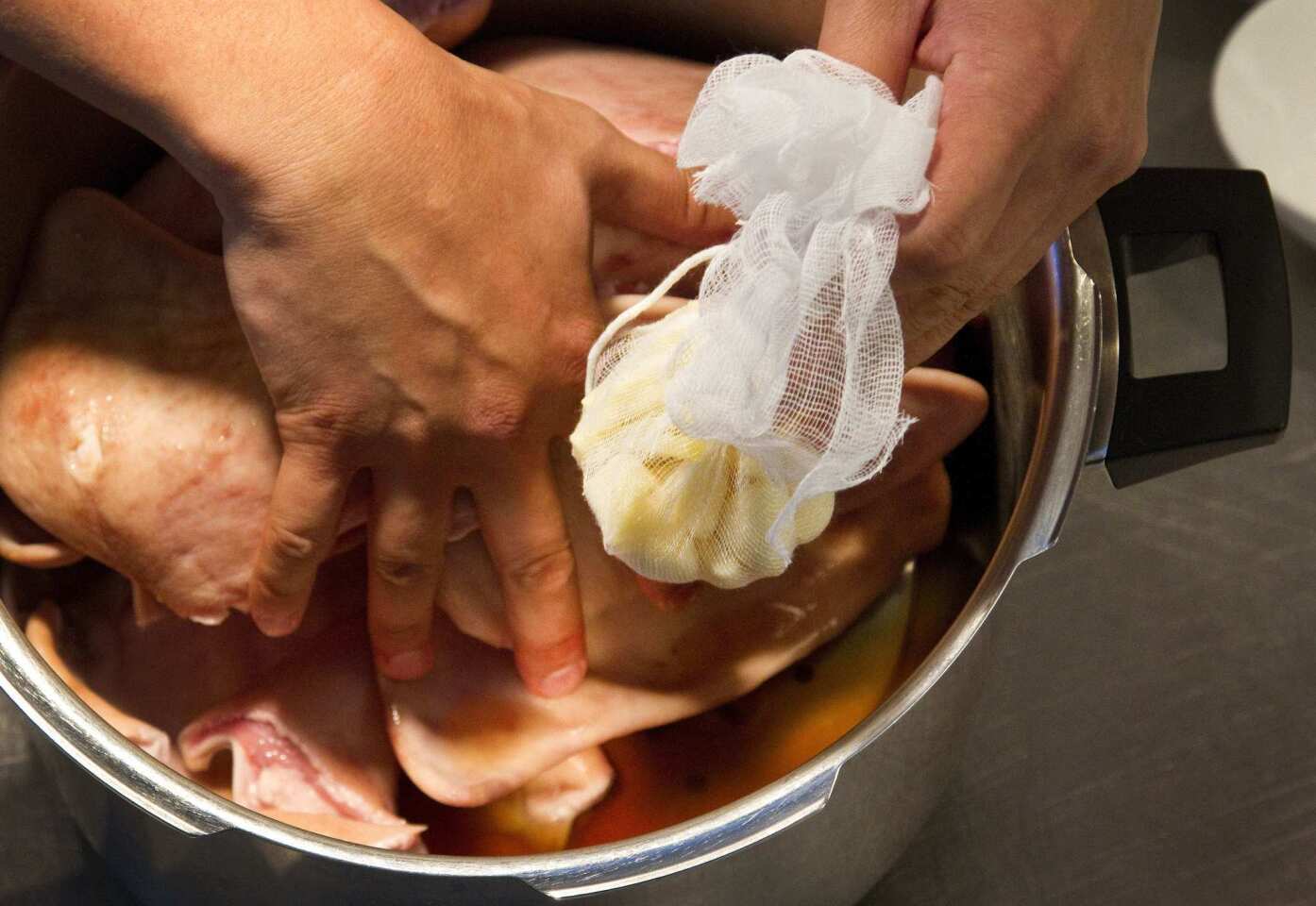
Place the sachet in the pressure cooker. (Ricardo DeAratanha / Los Angeles Times)
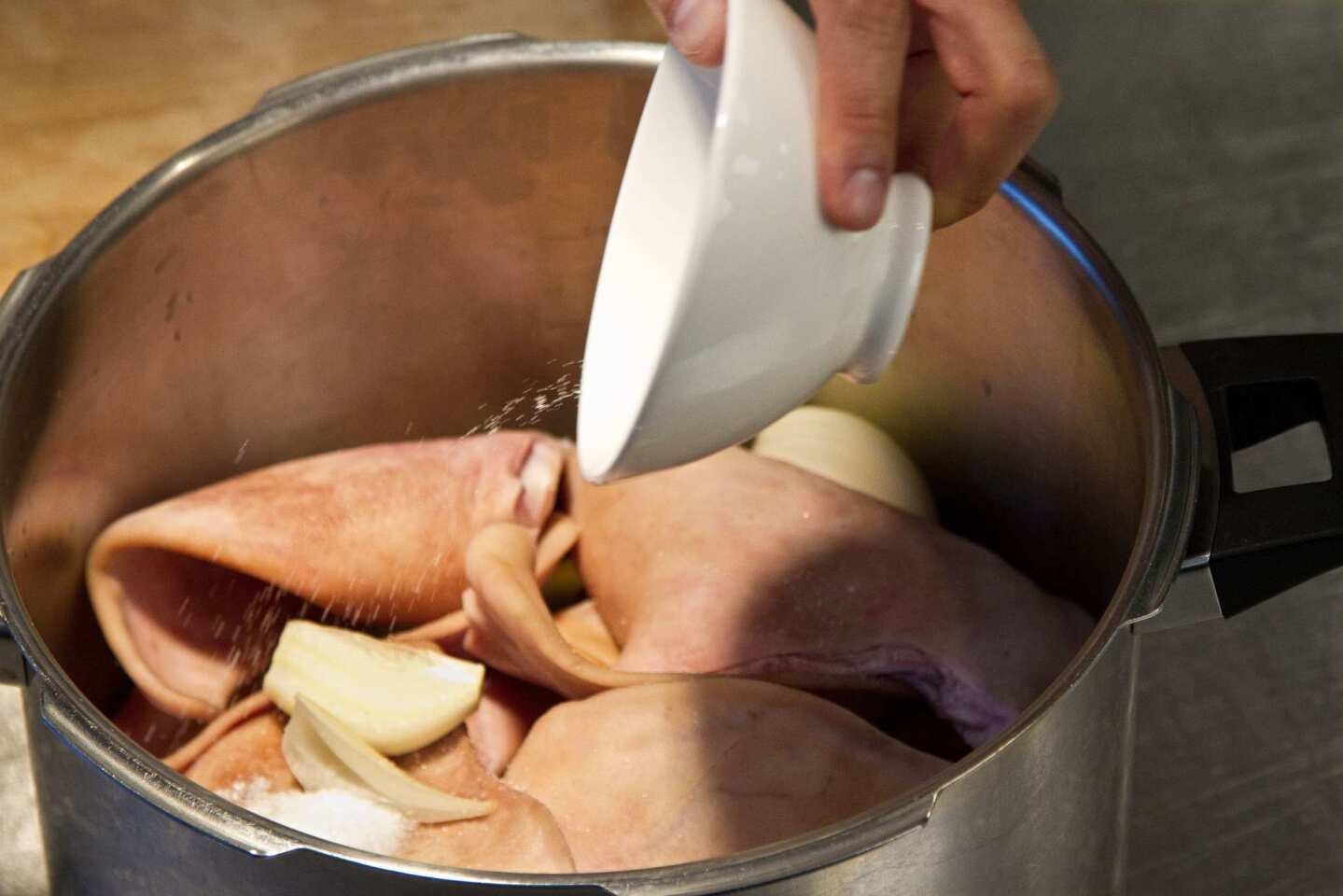
Salt and sugar are added to the pot. Seal the cooker and bring the pressure to 15 PSI. Cook the ears for 1 hour, then turn off the heat and let the pressure cooker depressurize naturally. (Ricardo DeAratanha / Los Angeles Times)
Advertisement
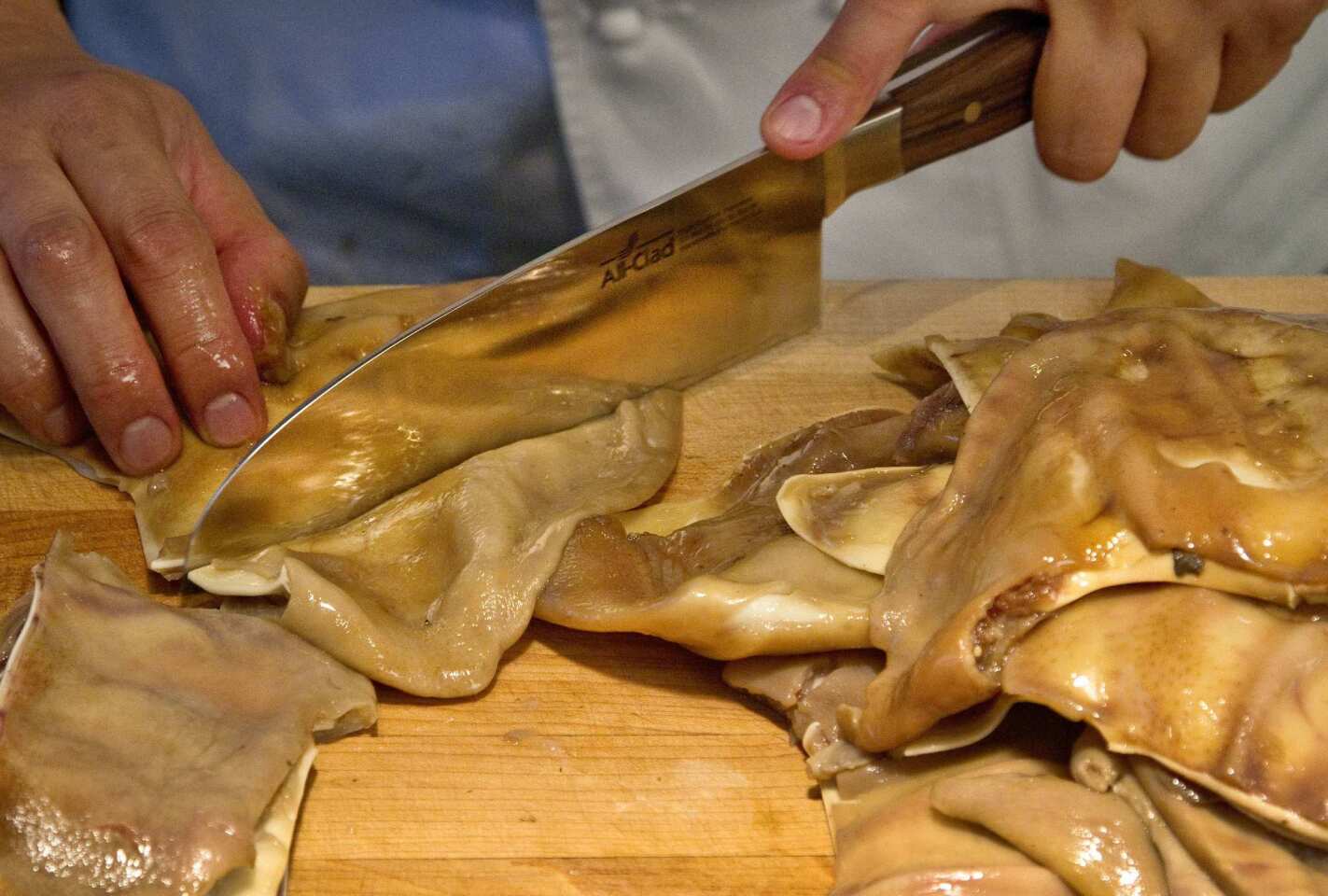
Remove the pig ears and set aside. Strain the liquid into a heavy-bottomed saucepan, discarding the sachet. Place the pan over high heat and add the black vinegar. Cook the liquid until it is thickened and reduced to about 2 cups (tiny bubbles will cover the surface of the liquid). Remove from heat.
While the liquid is reducing, cut the pig ears into large enough pieces that they fit the width of the terrine mold. (Ricardo DeAratanha / Los Angeles Times)
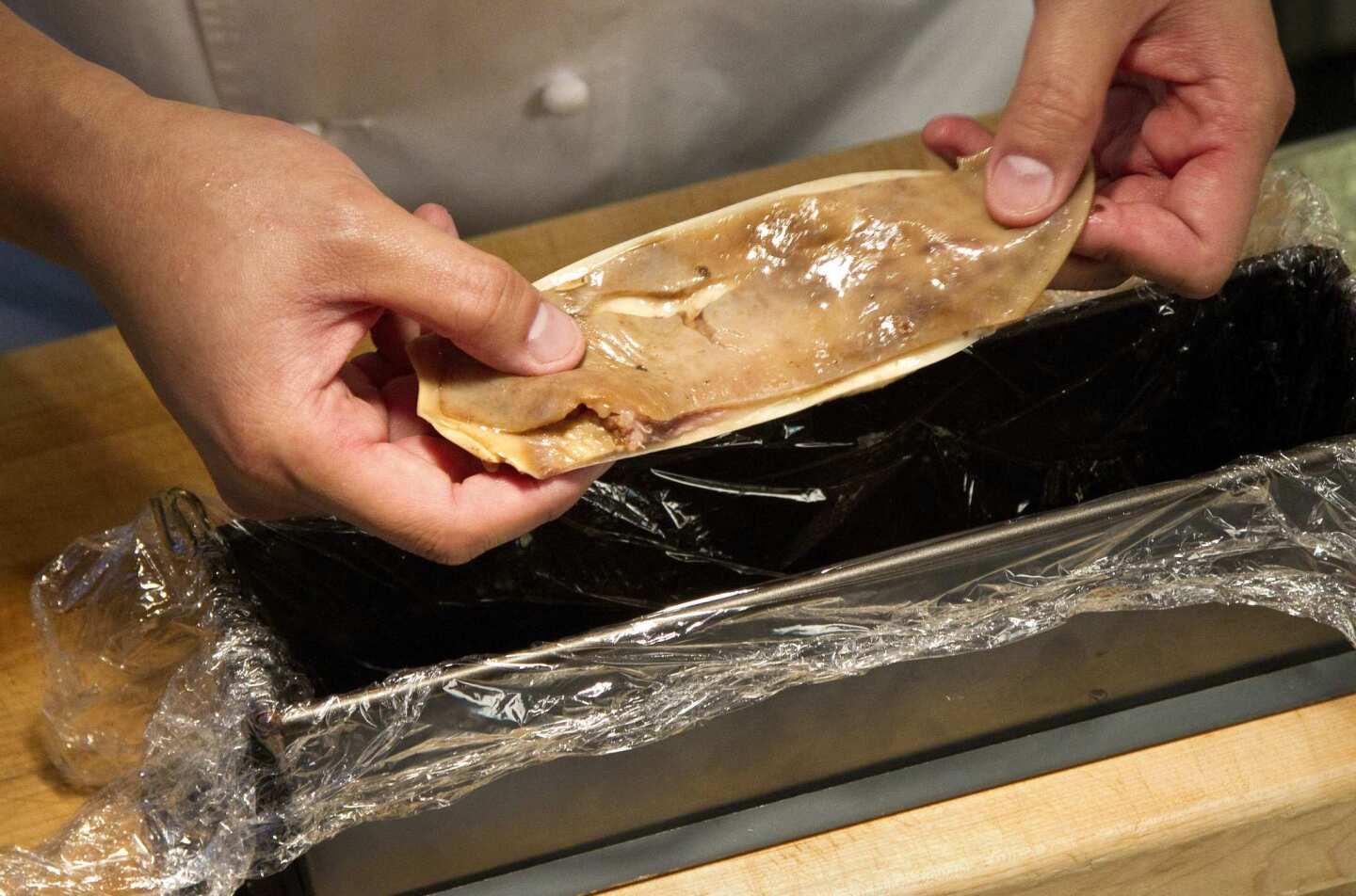
A spring-form pan is lined with plastic wrap, and cooked pig ears are layered in. (Ricardo DeAratanha / Los Angeles Times)
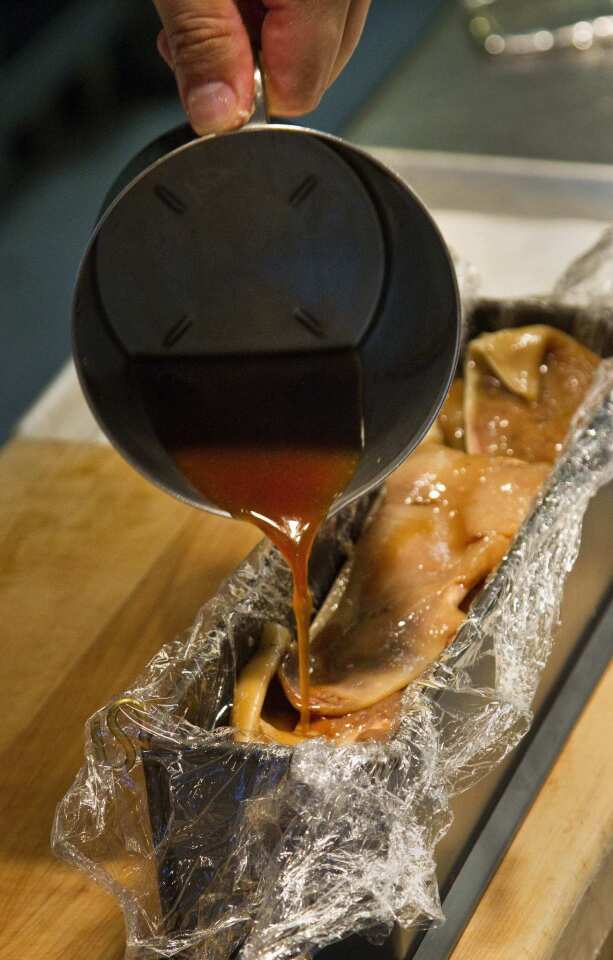
Pour a small amount of the reduced liquid over the ears so the liquid just comes to the top of the ear layer. Build another layer of pig ear on top of the first, adding more of the reduced liquid just to cover. Repeat with the layers of pig ear and liquid until the terrine reaches just below the top of the mold. (Ricardo DeAratanha / Los Angeles Times)
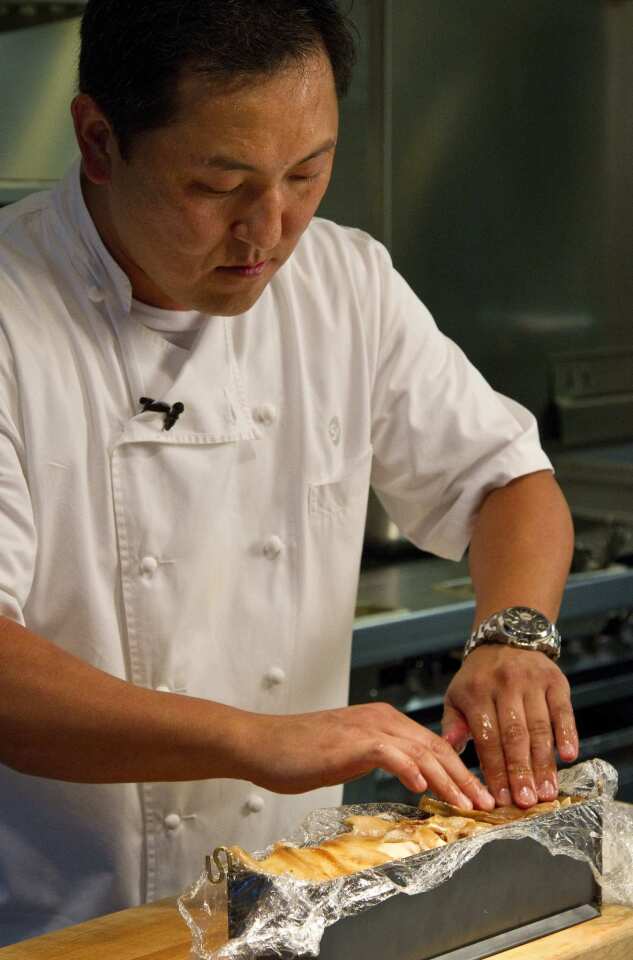
Apply pressure to the last layer of cooked pig ears. (Ricardo DeAratanha / Los Angeles Times)
Advertisement
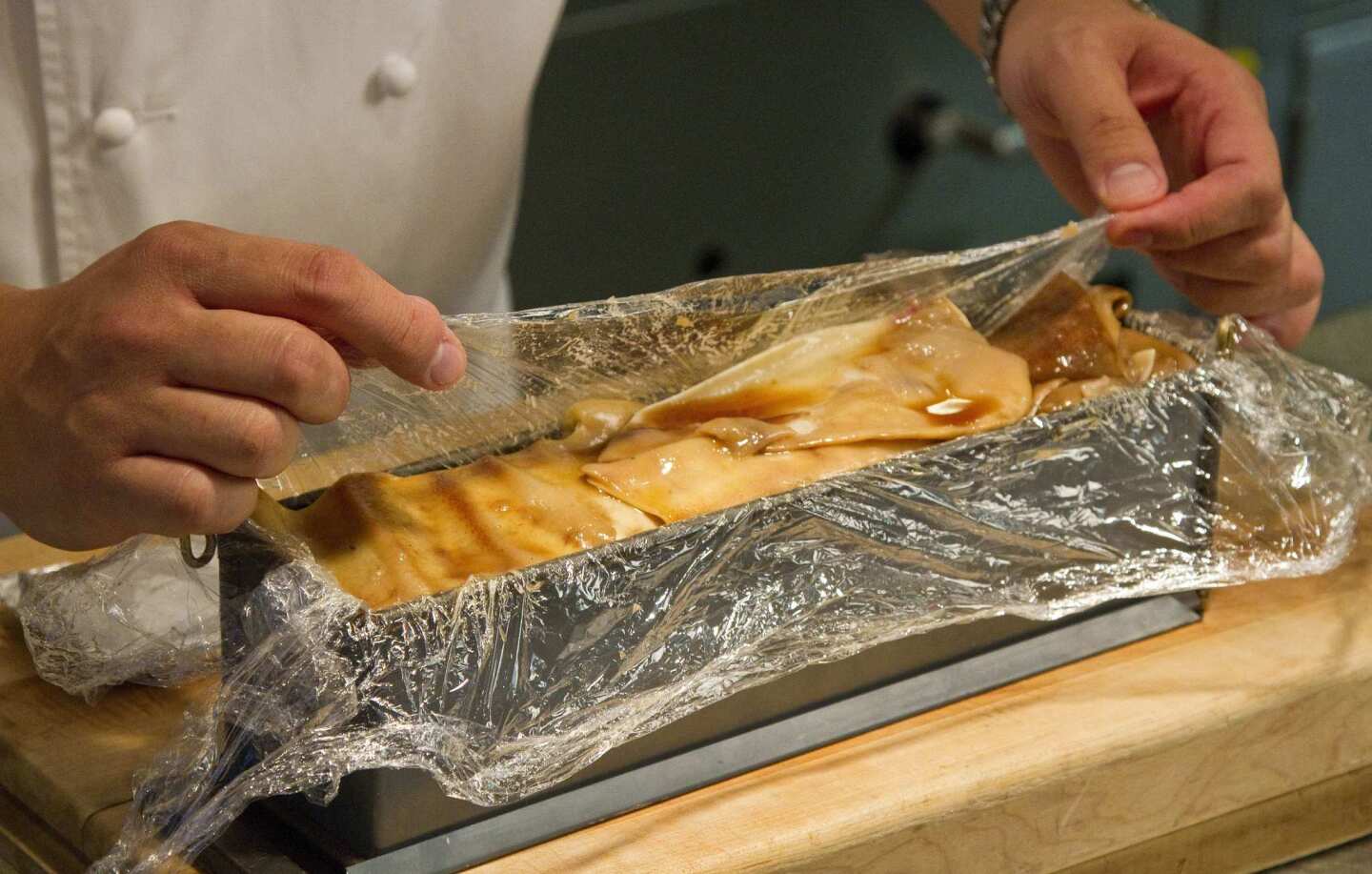
Tap the mold against the table to release any air bubbles, and carefully pull the plastic from each side to prevent creasing of the plastic wrap. (Ricardo DeAratanha / Los Angeles Times)
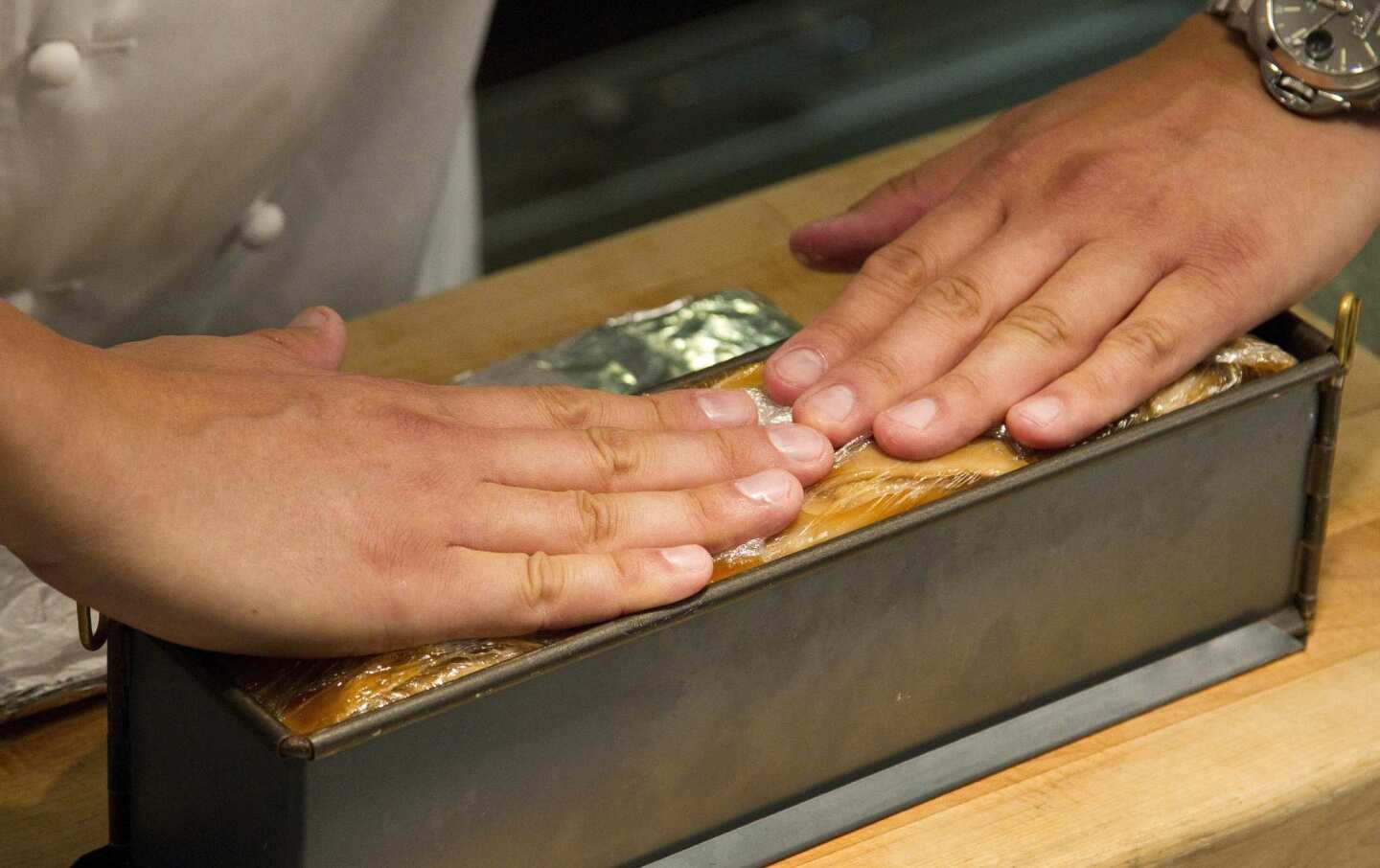
Gather the extra plastic wrap at the top and fold it over the terrine, as if you were wrapping a present. (Ricardo DeAratanha / Los Angeles Times)
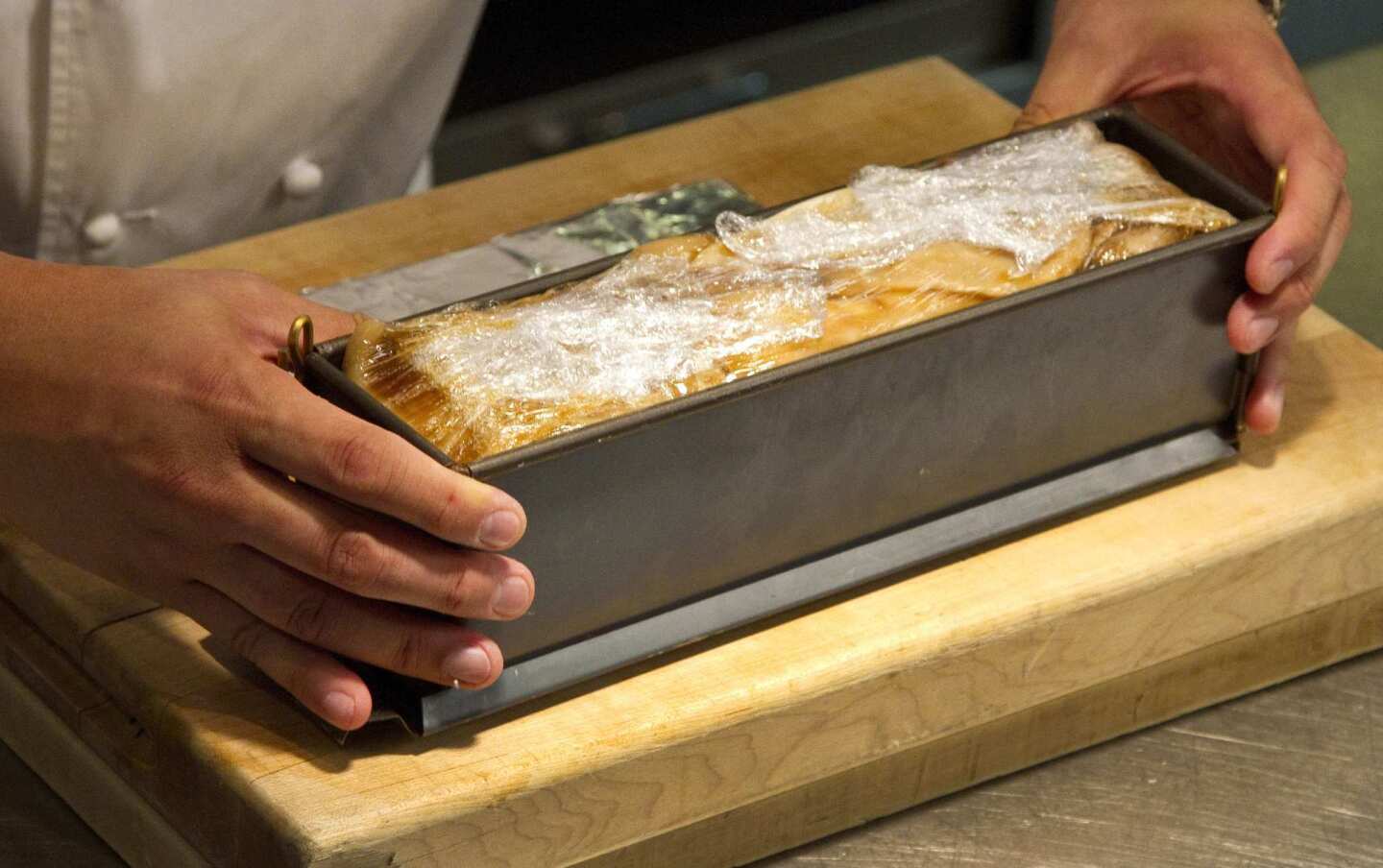
Tap the spring form several times so it settles. (Ricardo DeAratanha / Los Angeles Times)
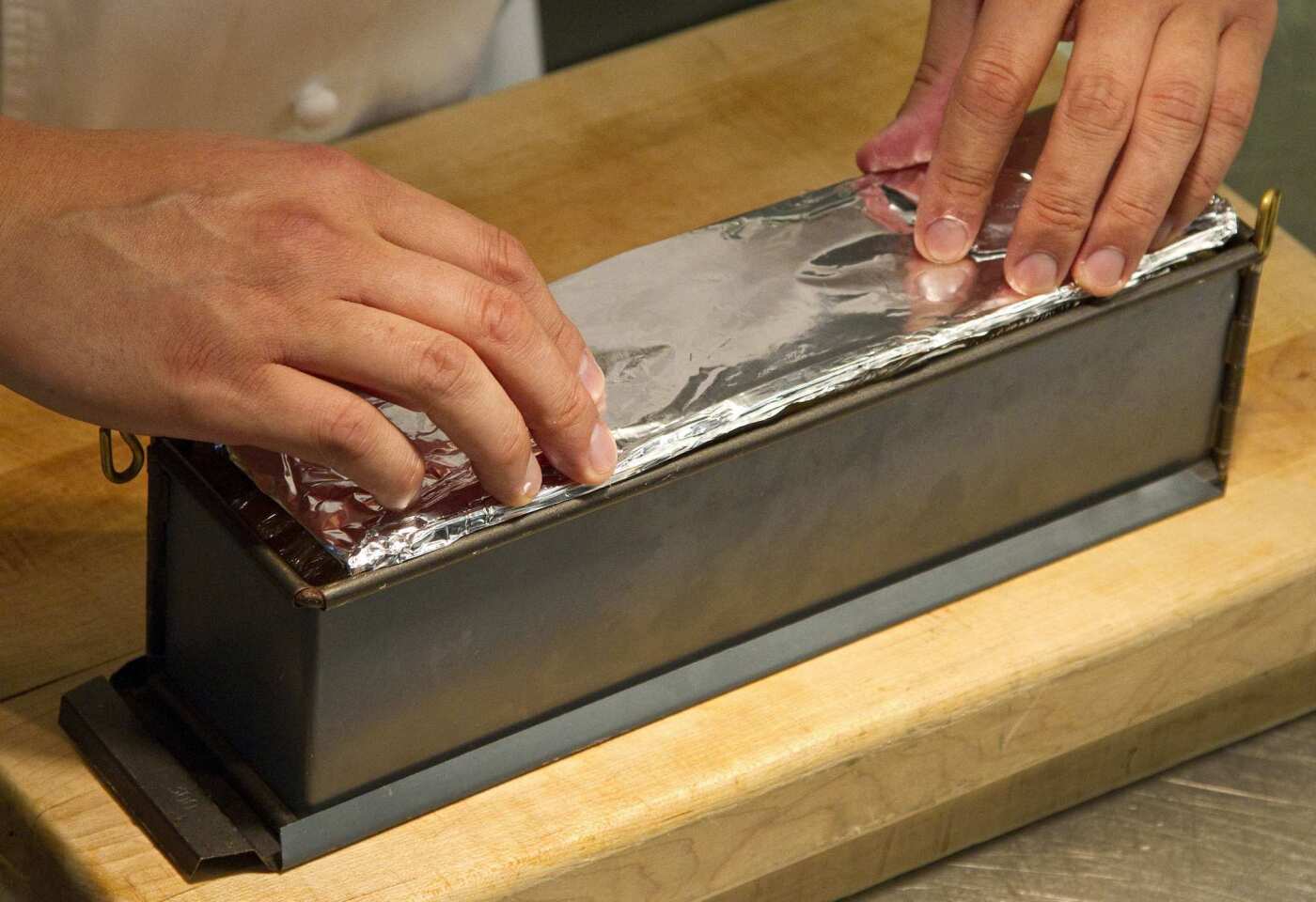
Put an aluminum foil lid on top, before putting it in the refrigerator to chill overnight. You can also cut a piece of cardboard to fit inside the mold and on top of the plastic wrap. (Ricardo DeAratanha / Los Angeles Times)
Advertisement
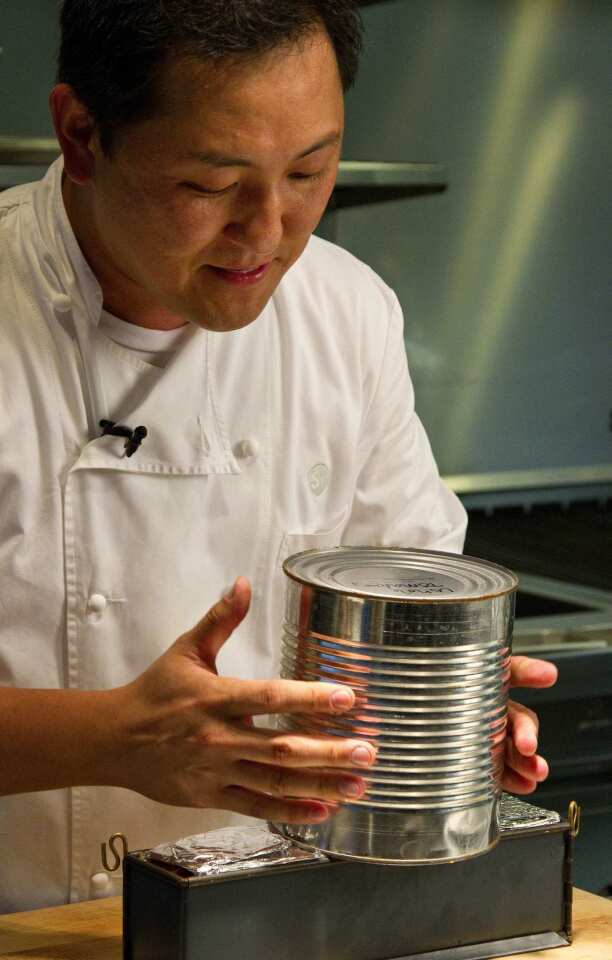
Put a weight on top of the pan, such as a food can, before placing the terrine in the refrigerator. (Ricardo DeAratanha / Los Angeles Times)
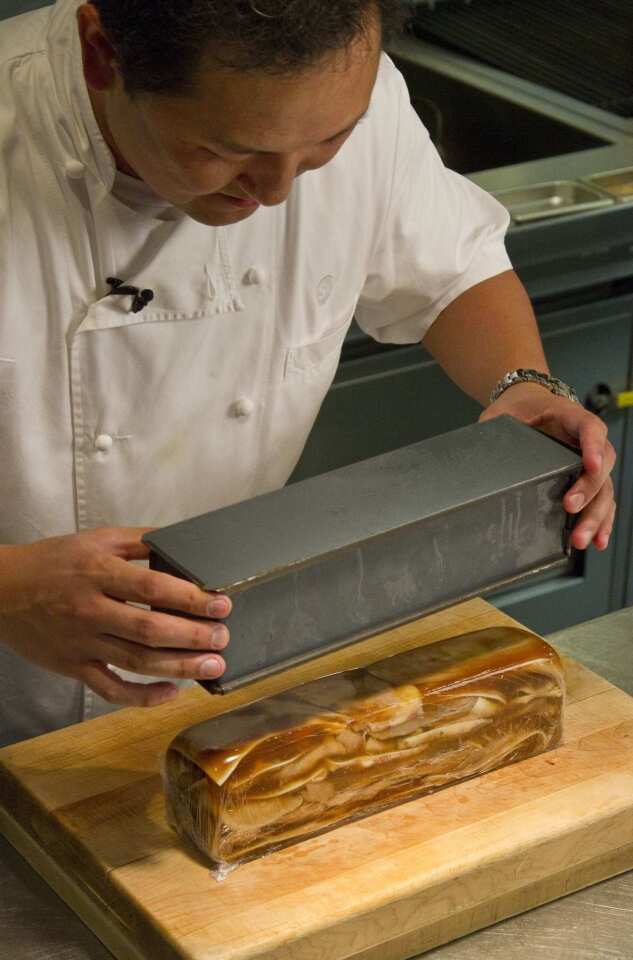
After refrigeration, turn over the spring-form pan to release the terrine. (Ricardo DeAratanha / Los Angeles Times)
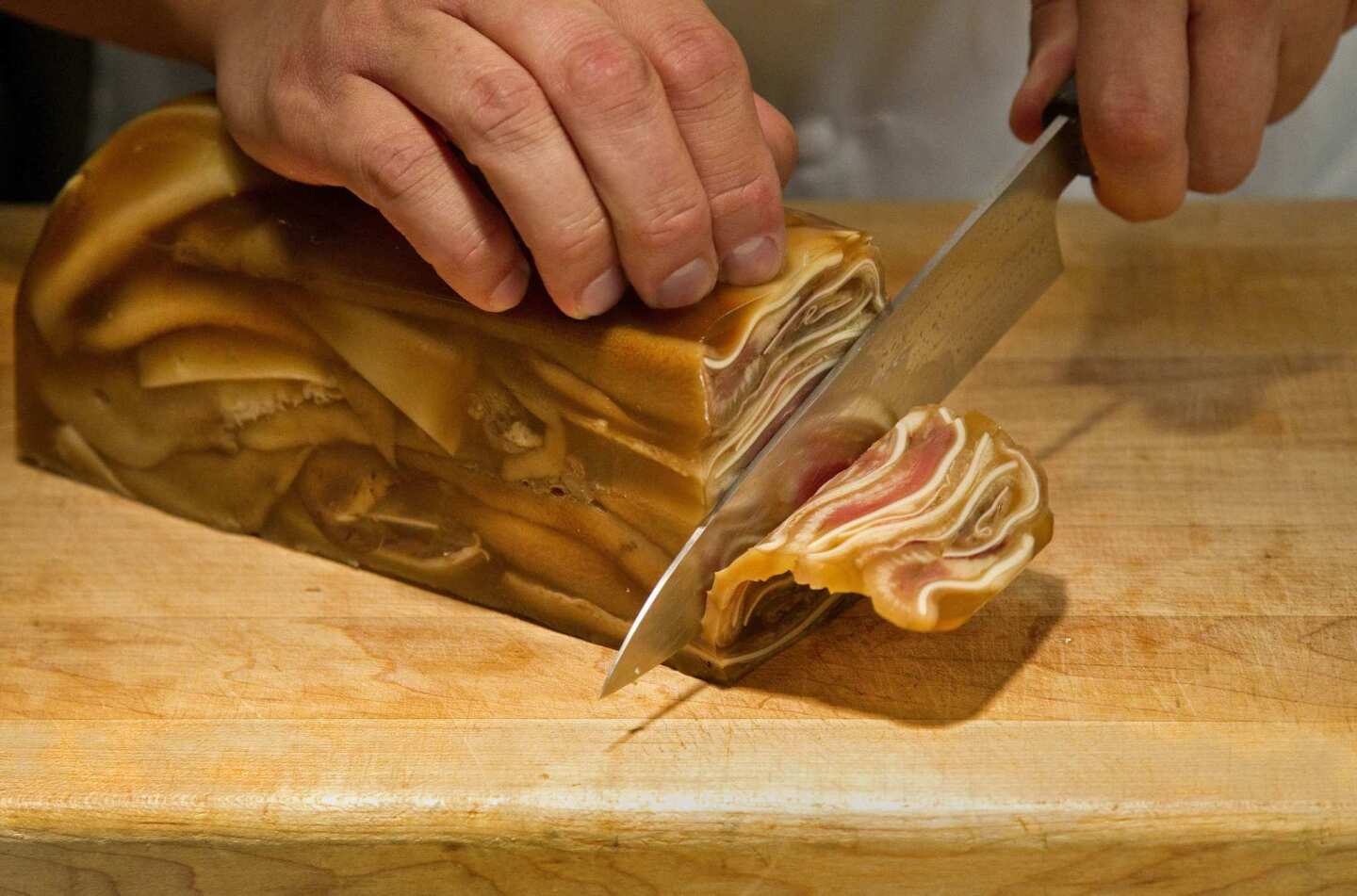
Unwrap the plastic wrap and slice to desired thickness. (Ricardo DeAratanha / Los Angeles Times)
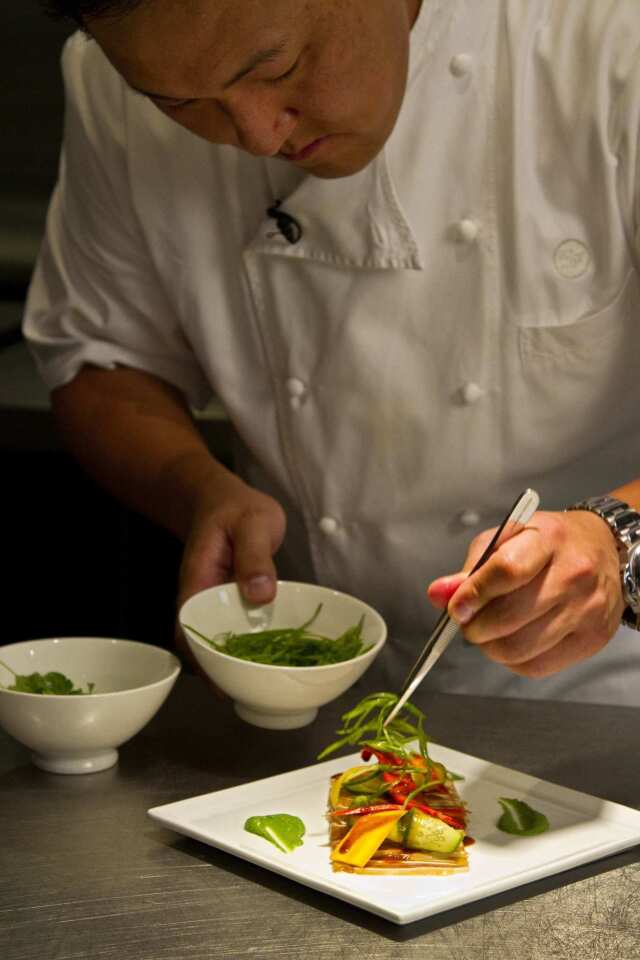
Garnish with julienned carrots, scallions and ginger threads, and serve with the dipping sauce. (Ricardo DeAratanha / Los Angeles Times)
Advertisement
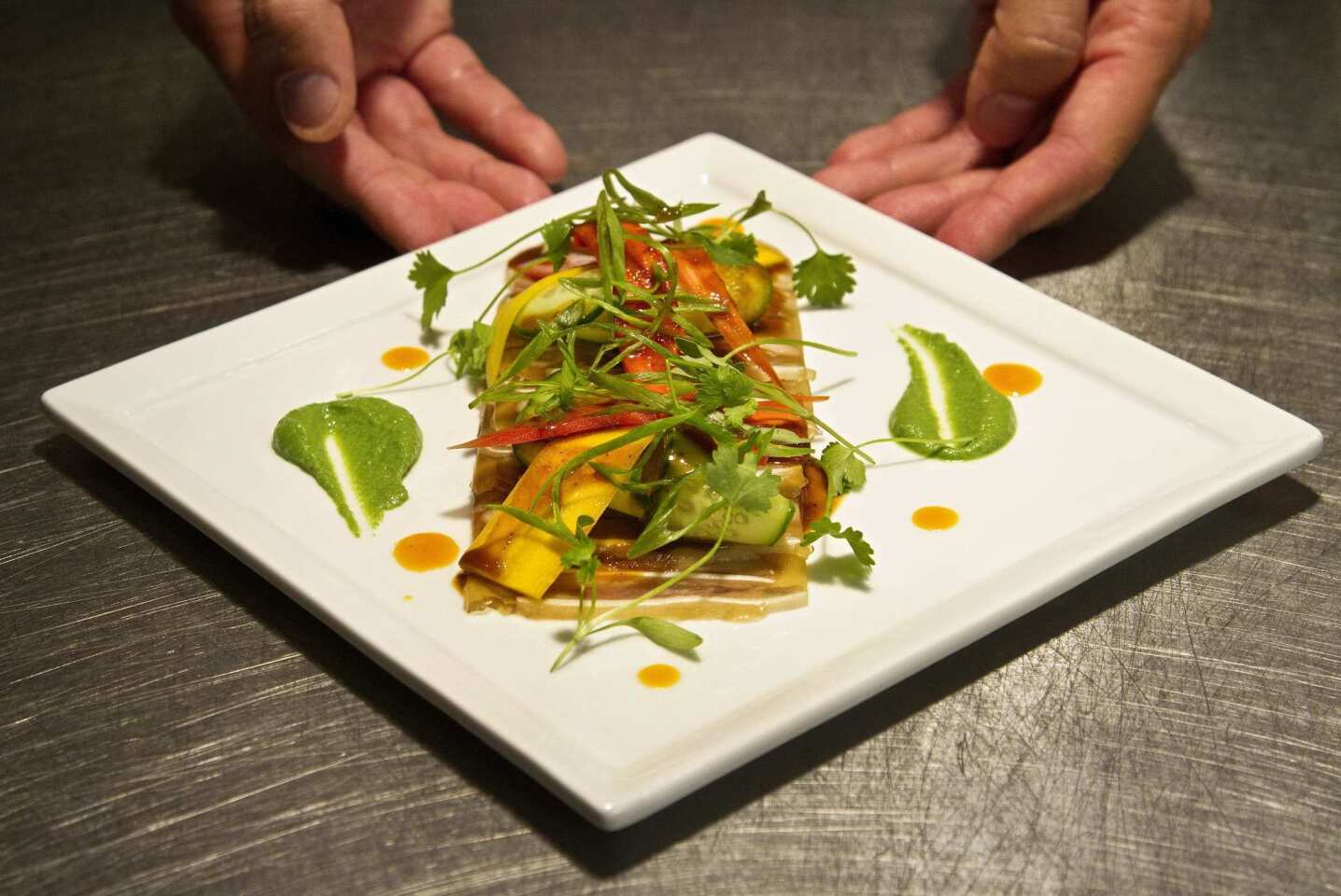
Here is the finished terrine. (Ricardo DeAratanha / Los Angeles Times)







